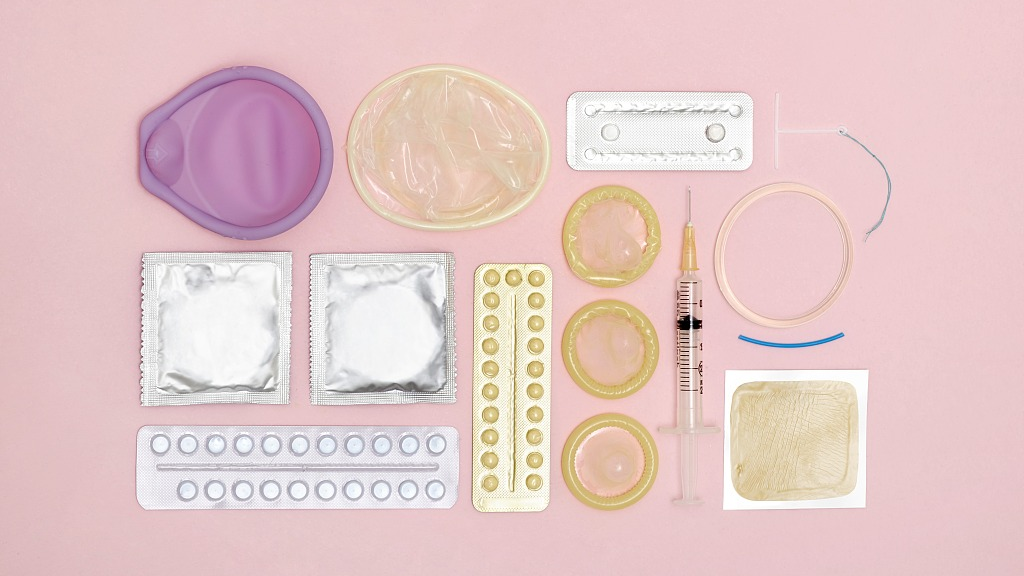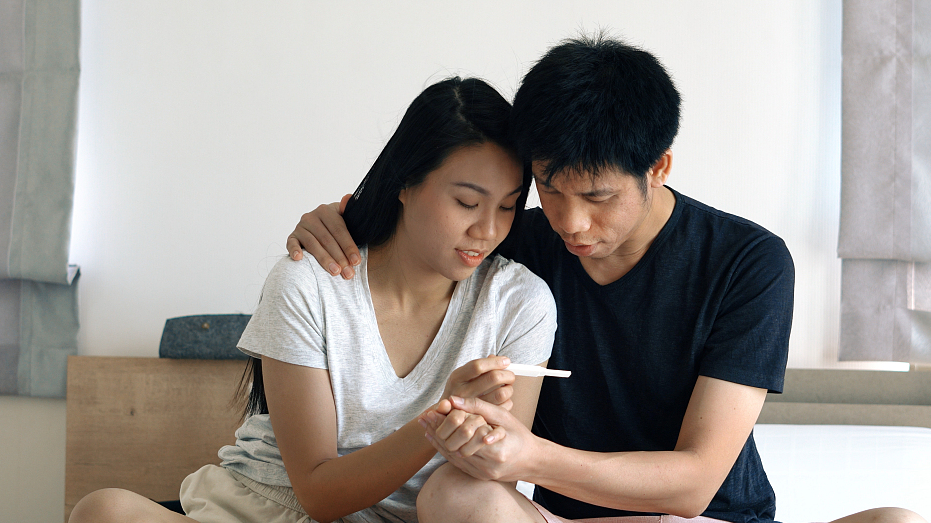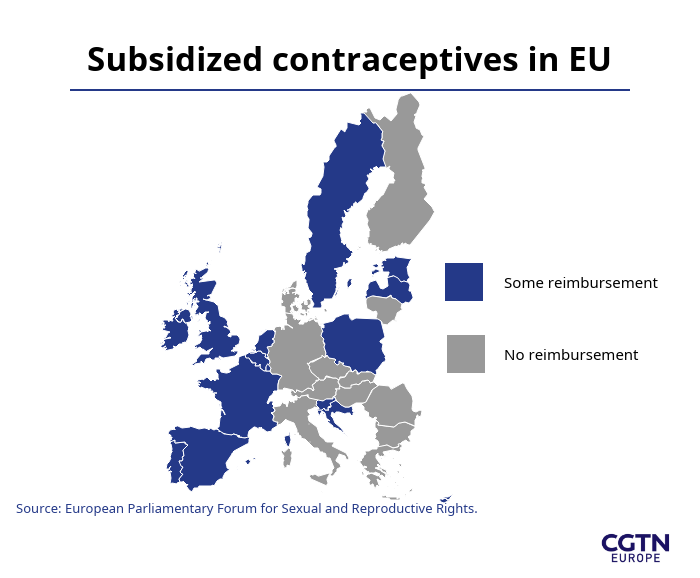
There are at least 15 different types of contraceptives now available. /VCG/
There are at least 15 different types of contraceptives now available. /VCG/
For women before the birth control pill was introduced in the 1960s, there was little they could do to take control of their reproductive health.
"Before the pill…You had to be very careful because if you got pregnant, it was the most disastrous thing," said Audrey, who is 86 and grew up in West London.
"Some women were thrown out of their homes…So, the pill was a huge step forward for some women."
Audrey was already married and had children when the pill was introduced in the UK and Germany in 1961, a year after it became available to women in the United States on August 18, 1960.
However, it could only be used by married women in the UK at the time. It wasn't available for women in France until 1967.

In Albania, only 25% of women use a modern contraceptive, according to the International Planned Parenthood Federation (IPPF). /VCG/
In Albania, only 25% of women use a modern contraceptive, according to the International Planned Parenthood Federation (IPPF). /VCG/
She added that people did not talk about sex or the pill when it first came to Europe.
"Most people didn't discuss things the way they do now," she said.
"You only whispered it to other people. Nothing was so open as it is now."
Before the pill was introduced, the only option to prevent an unwanted pregnancy for many women across Europe was to have an abortion.
In Poland in the 1950s, abortion was the main birth control for women.
"Abortion was legalized in 1956…and it was not so much stigmatized and taboo like it is nowadays," Liliana Religa, a representative from Federation for Women and Family Planning in Poland, told CGTN Europe.
"It was seen as a backup method when other kinds of contraception failed. Or for some women, it was the main method of birth control because it was free of charge."
Poland now has one of the strictest abortion laws in the EU, and there have been moves by the government to enforce a total ban on abortions and the morning after pill.
According to Religa, around 40 percent of women in Poland today do not use any type of birth control.

According to the IPPF, 43% of pregnancies in Europe are not planned. /VCG/
According to the IPPF, 43% of pregnancies in Europe are not planned. /VCG/
The side effects for the original pill were also a deterrent, which was one of the reasons why Audrey never took it.
When it was being produced in the United States, it was hard for the scientists to find willing patients to trial the drug because of the side effects.
Instead, they tested it on women in mental health facilities and eventually in Puerto Rico.
Today, the level of hormones in the pill has been greatly reduced, and its use varies dramatically throughout the EU.
In Spain, only 11 percent of sexually active 15-year-old girls take the birth control pill. In the Netherlands, 70 percent of girls were on the pill the last time they had sex.
Globally, the pill is the third most used contraceptive after the male condom and female sterilization, according to the UN.

Only 9 of the EU's member states reimburse contraceptives for girls under 19. /VCG/
Only 9 of the EU's member states reimburse contraceptives for girls under 19. /VCG/
However, there are now a variety of birth control options that women can take beyond the original pill, from the copper IUD that doesn't release hormones to the birth control shot.
Despite the ways that women can now control their reproductive health, access to contraceptives is not the same throughout the European union.
In 2019, 17 of the 27 member states did not provide reimbursement for contraceptives in their national health care system.
And only three, Bulgaria, Croatia and Greece, allowed people to access contraceptives without a prescription.
Despite this, the use of contraceptives has doubled globally between 1970 and 2015, a long way from when the pill was restricted to only married women.

Etta, an 86-year-old woman from Outer Hebrides, Scotland, can see this difference in the way her granddaughter talks about the pill.
"My granddaughter is nearly twenty-one. She takes [contraceptives] and she talks about it quite openly.
"I was quite mortified. There's such a difference between me as a 21-year-old and she as a 21-year-old…It's a trillion years difference in attitude."
Etta never took the pill when she was younger, and said that she would have been embarrassed to even talk about it.
Despite this, she added that this difference is probably a good thing.